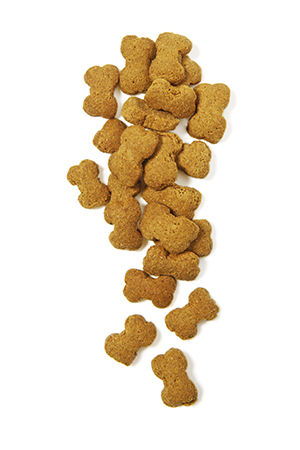
I'd like to thank the FDA (Food and Drug Administration) for helping me feel a little safer every time I scoop a serving or crack a can of my pet's favorite food. The United States continues to innovate in pet food testing and safety. Recently, the FDA announced that it has been working with a network of 34 state and university scientific laboratories, across the U.S. to help ensure our pets are fed the safest diets in the world. The FDA revealed a sneak peek at a large, nationwide study of pet food contamination and offered advice on how pet gaurdians can prevent foodborne diseases, like Salmonella, in their homes1.
The FDA is very interested in the following:
- Knowing the prevalence of pet food contamination illnesses in both pets and people caused by pet foods and treats
- Identifying the problems with pet food manufacturing, processing and storage
To help answer these important questions, the FDA has also partnered with The Veterinary Laboratory Investigation and Response Network (Vet-LIRN). For the past two years, eleven of the 34 specialized laboratories involved in the research run by Vet-LIRN have been solely focused on identifying Salmonella infections in dogs and cats. These results are almost ready for publication, but the FDA offered a glimpse at their findings so far1.
FDA results, sneak peek
The Vet-LIRN pet food Salmonella study looks promising. A total of 2965 animals have been tested to date, with fewer than 100 testing positive for Salmonella (less than 3%). While that number is impressively low, it's important for pet gaurdians to know that less than half of the pets that tested positive for Salmonella exhibited any signs of illness1. This means the human family was unaware that they were at risk for this potentially serious bacterial infection. Households with young children, older adults and anyone on immunosuppressive medications or combating chronic illness are at greater risk.
Another finding of Vet-LIRN's preliminary report was pets fed a raw food diet had a higher incidence of Salmonella and Listeria monocytogenes, another common bacterial contaminant1.
Click here to learn more about raw foods and cats.
The FDA speculates that raw food likely presents a greater risk due to the lack of the bacterial "kill step" of food heating that most foods undergo during processing. The great news is raw food manufacturers are aware of this and have begun utilizing techniques such as high-pressure pasteurization and other breakthroughs to reduce the risk of bacterial contamination in their foods. The FDA raising awareness and identifying production problems is critical for pet food manufacturers to create safer foods now and in the future.
If you ever want to find out if your pet food has been recalled, the FDA has developed an easy to use website for pet gaurdians and veterinary clinics. This list is kept current and is a great way to research pet foods and aid in selection. I often refer pet guardians to this website whenever they're concerned about safety or considering changing brands.
Food safety tips
The FDA has offered simple steps to minimize the chances of spreading a foodborne illness in your household1:
- Avoid pet foods in dented cans, torn or damaged bags, or that look dirty or old, even if they're on sale. Maybe especially if they're on sale.
- Feed your pets on flooring or materials that can be easily disinfected such as tile or rubber mats. Clean your pet's feeding area every couple of days with antibacterial cleanser.
- If you prepare your pet's food on a counter or table, disinfect it thoroughly as soon as you're done. Many pathogenic bacteria can survive on common surfaces for hours to days, meaning your risk doesn't end when you finish feeding.
- Designate certain kitchen utensils, cutlery, can openers and bowls for your pets. Don't commingle or use these utensils with human foods, no matter how cute they may be.
- Wash your hands throughly after handling any pet food, wet or dry. Be particularly careful about wiping your hands on clothing, your eyes, nose or mouth and on cloths used in food preparation.
- Seal your pet foods in containers kept in cool, dry areas to reduce spoilage.
- Consider keeping dry foods in their original packaging inside a sealed container. Be sure to keep the packaging for product bar codes, manufacturing lot numbers and other identifying information that can be essential to diagnose or treat your pet in the event of illness or recall notice.
Our nation's pet and human food supply is arguably the safest in the world. Every time I hear about a new food recall, I'm relieved that the FDA and Ver-LIRN is doing their job. Thank you for helping keep my pets and patients as safe as possible.
If you have any questions or concerns, you should always visit or call your veterinarian -- they are your best resource to ensure the health and well-being of your pets.
Resources:
